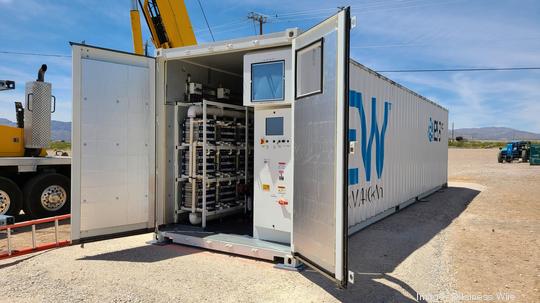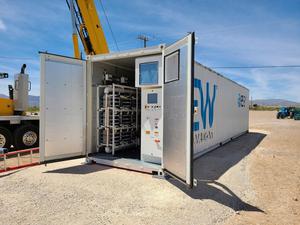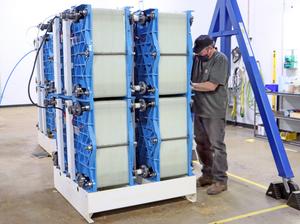
ESS on Monday announced the commissioning of six of its Energy Warehouse units with a major electric utility in what could be the grid-scale battery company's biggest sign of progress since going public in 2021.
The batteries aren't yet tied into the Sacramento Municipal Utility District's grid, which serves some 1.5 million residents in and around California's capital city. But getting the batteries delivered and through testing in around eight months was a step forward for ESS, Hugh McDermott, the company's senior vice president for business development and sales, said.
"There's other work that has to be done on the site by other contractors before the overall project gets put into service," McDermott said, "but our batteries have passed the tests with flying colors, and that's what we're celebrating."
Part of larger deal
Success with SMUD could carry ESS (NYSE: GWH) a long way toward its growth goals — the Wilsonville company and the utility have a framework agreement for 2 gigawatt-hours of storage capacity. The six units delivered offer 500 kilowatt-hours apiece, or 3 megawatt-hours total — just 0.15% of the deal's full potential.
ESS hasn't said what SMUD is paying for the units, but the company in 2022 reported $192,000 in revenue from the sale of an Energy Warehouse to a different customer.
ESS is aiming to edge into a fast-growing grid-battery market dominated by lithium-ion systems with a "flow battery" system that stores energy in an iron-based liquid electrolyte. A chief selling point is economical output of up to 12 hours, at least three times what lithium-ion systems can offer.
ESS' is one of several long-duration technologies trying to break the lithium-ion hegemony, but McDermott said ESS is beyond rivals that are doing pilot projects.
"We're actually building commercial products," he said. "We're delivering commercial projects around the world."
That said, the SMUD deployment could be a key building block.
'How do we go big'
"It's not a technology proof of concept, or does-it-work type of thing," McDermott said. "This is how do we go big. So let's figure it out on a smaller scale, how we optimize the controls, the deployment methodologies, operational performance enhancements, roadmap, the kinds of product enhancements we also want to bring in over the next several years. That's what these early-stage projects are intended to deliver."
ESS raised around $250 million in going public through a SPAC merger in October 2021 and has poured tens of millions of dollars into building out its Wilsonville production capacity. As of the end of last year it had 271 full-time employees, most in the Portland metro.
The company reported $99.5 million in cash and equivalents as of June 30, down from $119 million a quarter earlier. It had a net loss of $22.9 million in the second quarter on $2.8 million in sales and has said it expects cash burn to continue at a similar or lower rate.
ESS shares "despacked" around $8, surged briefly higher, but then slid and have been under $2 most of this year. They closed up 4% at $1.57 on Monday ahead of the SMUD announcement, giving the company a market capitalization around $250 million.





